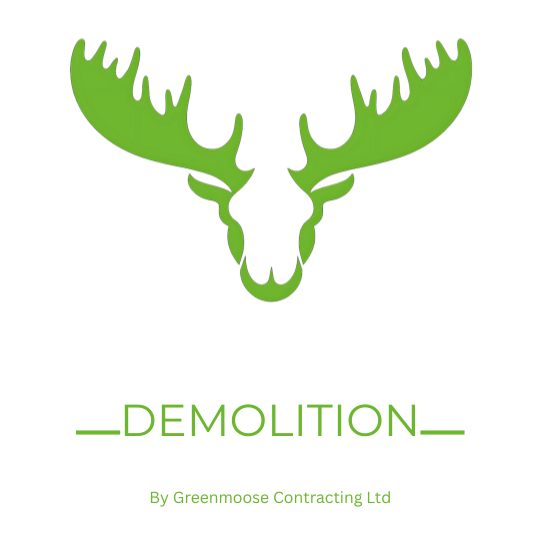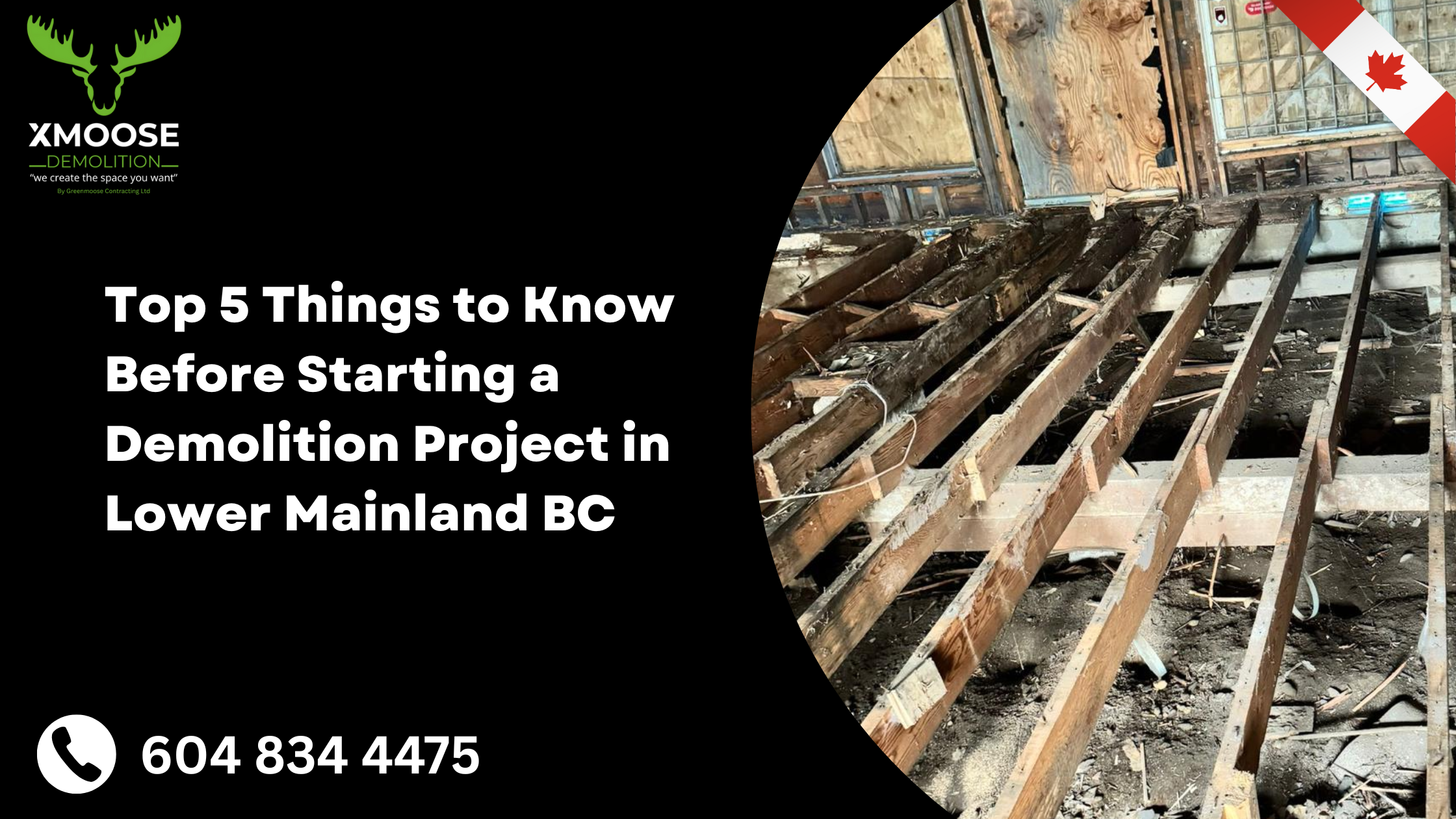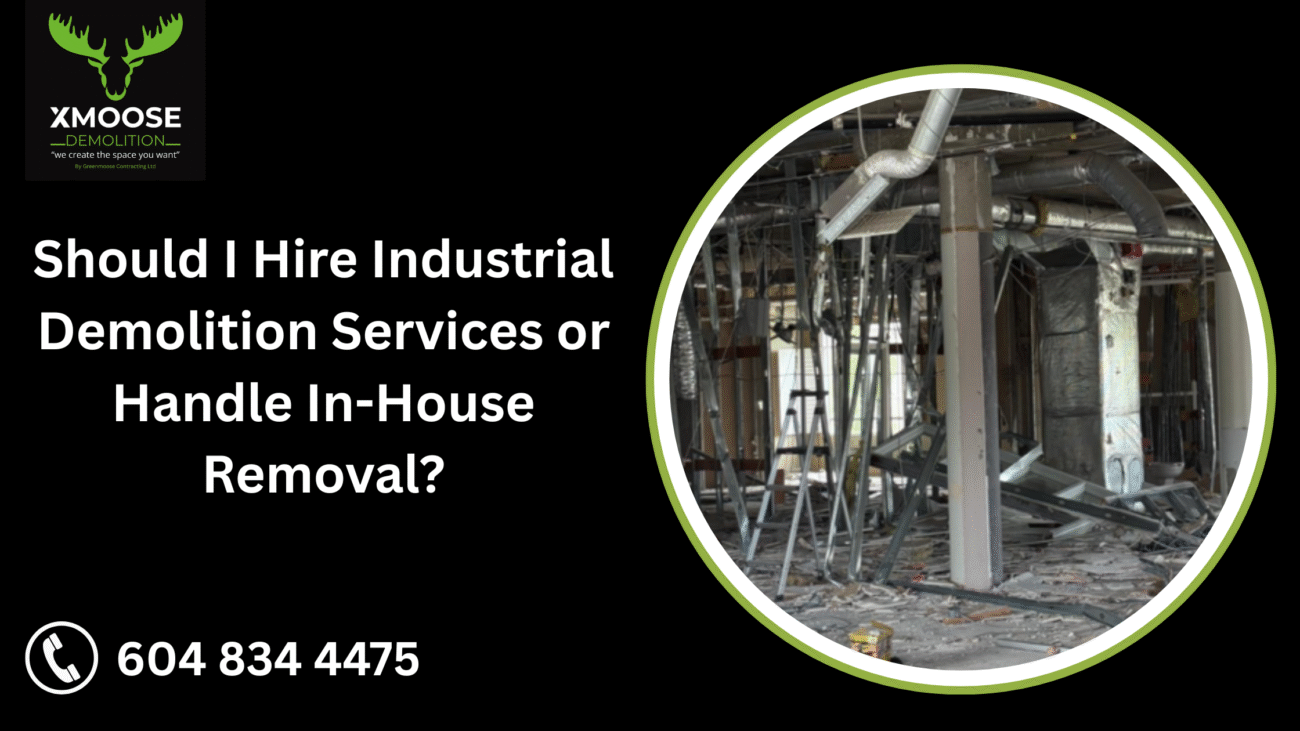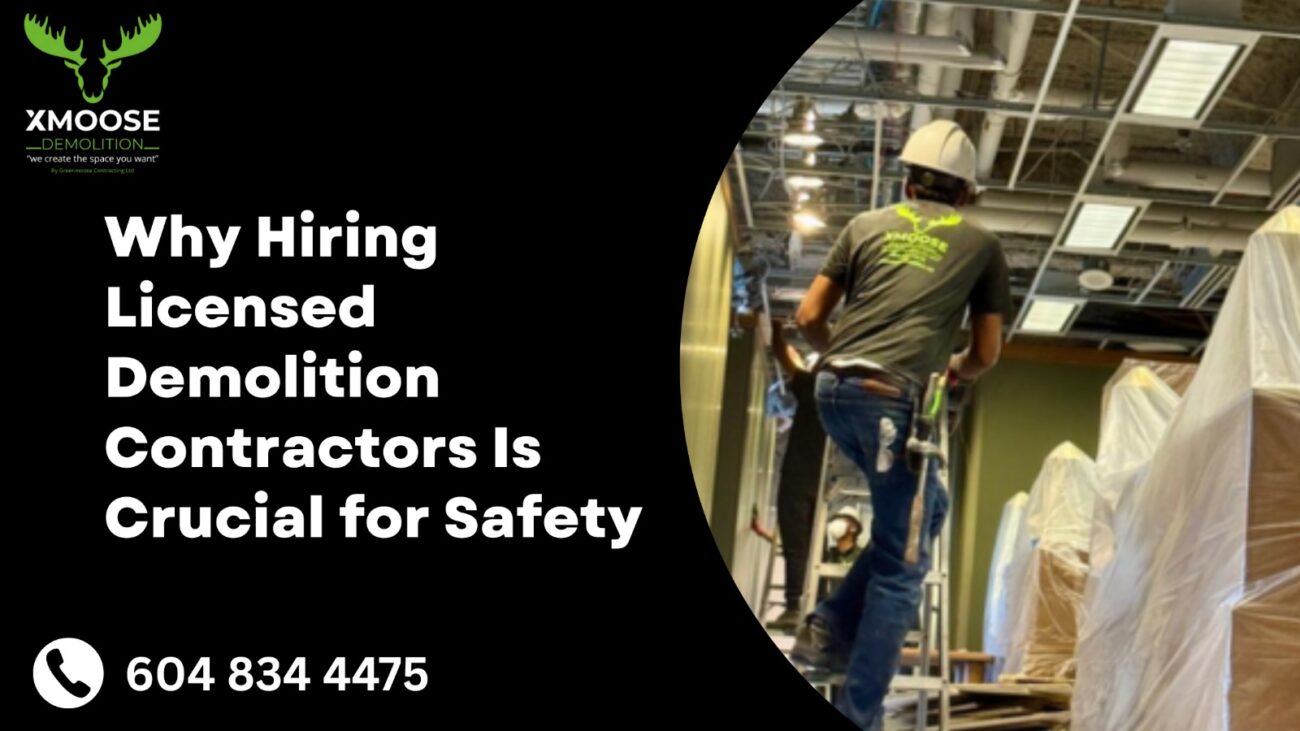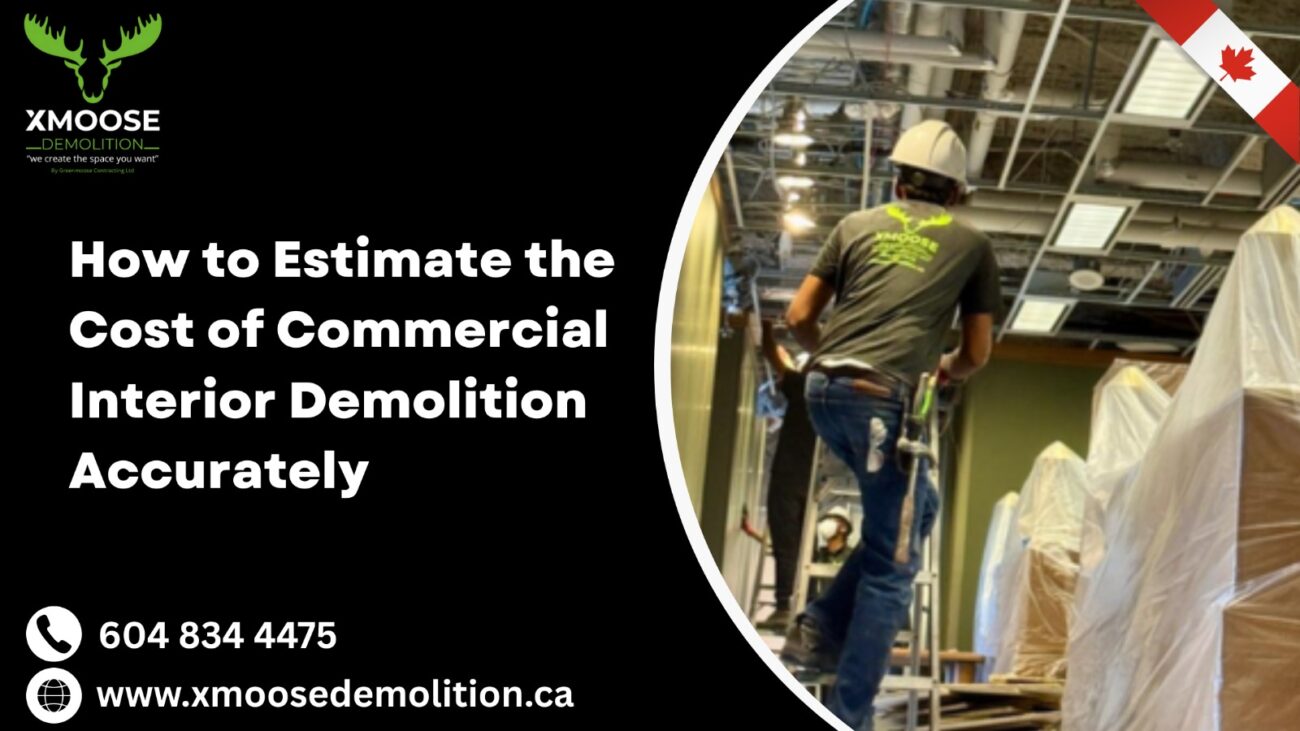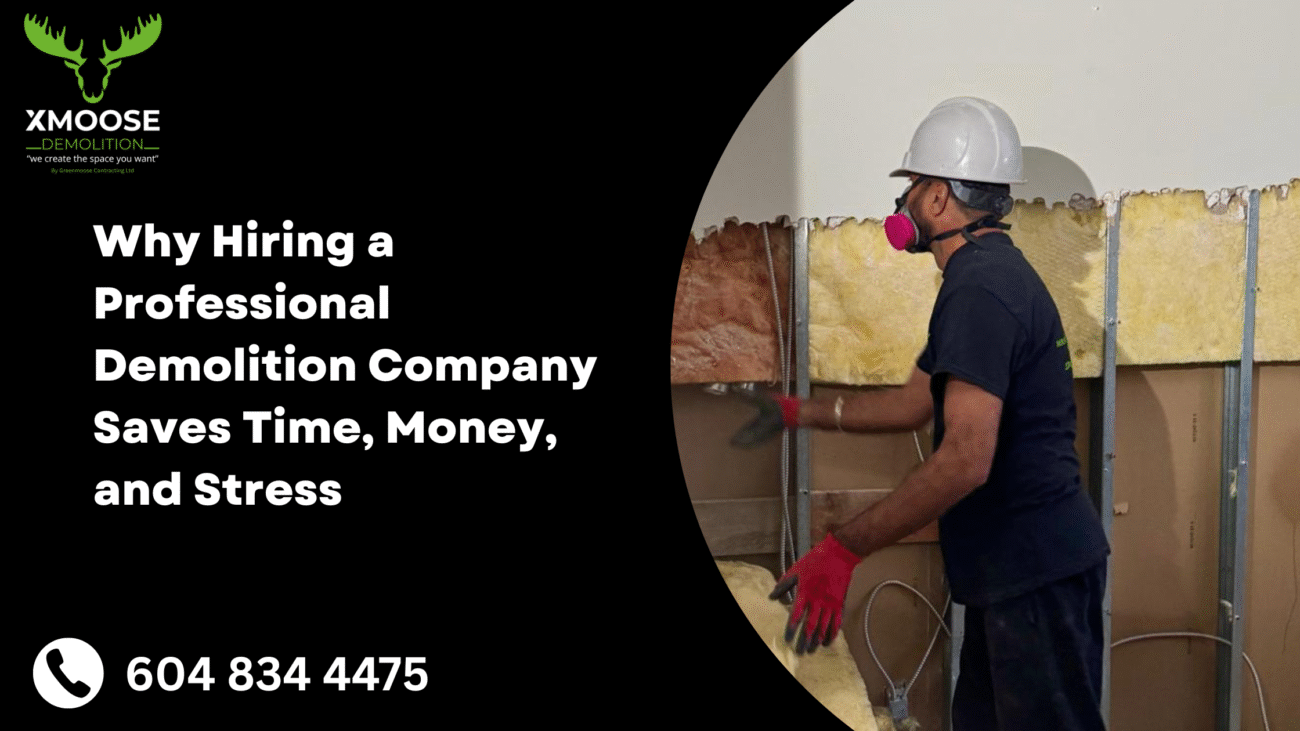Planning a demolition project in the Lower Mainland BC? Whether you’re tearing down a small structure or preparing a property for major redevelopment, it’s important to understand that demolition is a regulated, technical process — not just a wrecking job. At XMoose Demolition, we help homeowners, builders, and business owners tackle their projects safely and efficiently.
Here are the top five things you need to know before starting a demolition project in this region.
1. Permits Are a Must
In BC, you can’t just start demolishing without approval. You’ll likely need:
- A demolition permit from your local municipality
- An asbestos inspection report for older structures
- Proof that utilities are disconnected (gas, electricity, water)
Skipping this step can lead to fines, project delays, or even legal action. At XMoose Demolition, we help clients navigate the paperwork and obtain the right permits to keep their project compliant.
2. You May Need a Hazardous Materials Inspection
Homes and buildings constructed before the 1990s often contain hazardous materials like:
- Asbestos in insulation, flooring, or siding
- Lead-based paint
- Mould or contaminated soil
Before any demolition begins, a qualified environmental consultant must conduct a hazardous material survey. This ensures that harmful substances are identified and removed safely, protecting your health, workers, and the environment.
3. Utility Disconnections Are Crucial
Before demolition starts, all utilities need to be properly disconnected and capped. This includes:
- Electricity
- Natural gas
- Water and sewage lines
- Telecom or internet wiring
Failing to disconnect utilities can cause serious safety hazards or unexpected service interruptions in the neighbourhood. XMoose coordinates with utility companies to ensure all services are shut off professionally and on time.
4. Choose the Right Demolition Method
There are different approaches to demolition depending on the structure:
- Manual or selective demolition for partial or interior work
- Mechanical demolition using heavy equipment for full teardowns
- Deconstruction for salvaging reusable materials
We assess your needs and recommend the best method — considering safety, cost, and environmental impact. Our team is trained to handle residential, commercial, interior, and exterior demolition with minimal disruption.
5. Debris Disposal and Recycling Is Regulated
Demolition generates tons of debris — but it can’t all go to the landfill. In BC, many materials must be sorted, recycled, or disposed of at approved facilities, including:
- Wood
- Concrete
- Drywall
- Metals
- Hazardous waste
At XMoose Demolition, we follow eco-friendly practices and ensure all materials are removed and processed responsibly. We even provide junk removal services as part of our complete demolition package.
Final Words
Demolition in Lower Mainland BC is more than just breaking down walls — it’s a process that requires planning, permits, and professionals. At XMoose Demolition, we make sure every step is handled safely, legally, and efficiently.
